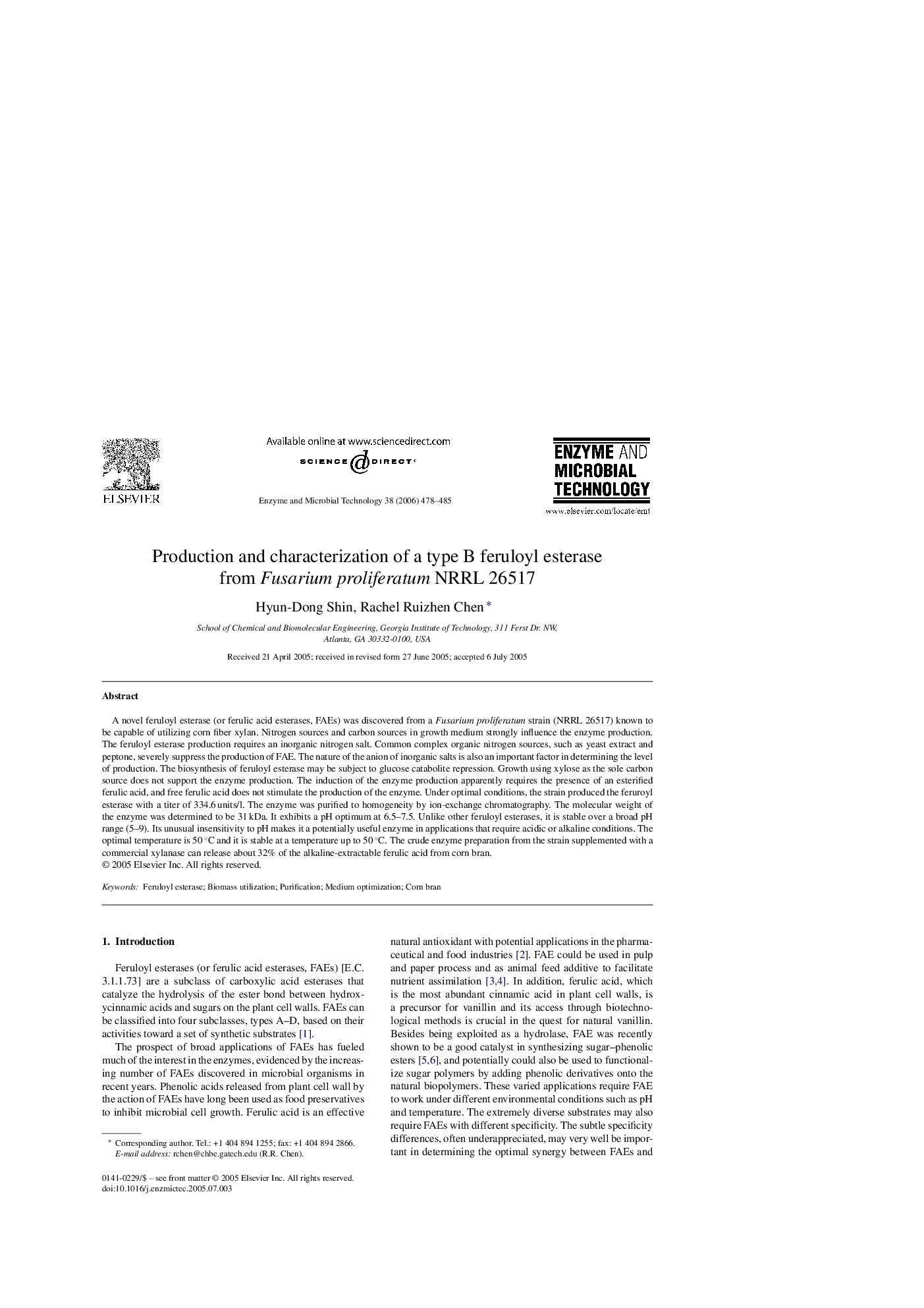| Article ID | Journal | Published Year | Pages | File Type |
|---|---|---|---|---|
| 18792 | Enzyme and Microbial Technology | 2006 | 8 Pages |
A novel feruloyl esterase (or ferulic acid esterases, FAEs) was discovered from a Fusarium proliferatum strain (NRRL 26517) known to be capable of utilizing corn fiber xylan. Nitrogen sources and carbon sources in growth medium strongly influence the enzyme production. The feruloyl esterase production requires an inorganic nitrogen salt. Common complex organic nitrogen sources, such as yeast extract and peptone, severely suppress the production of FAE. The nature of the anion of inorganic salts is also an important factor in determining the level of production. The biosynthesis of feruloyl esterase may be subject to glucose catabolite repression. Growth using xylose as the sole carbon source does not support the enzyme production. The induction of the enzyme production apparently requires the presence of an esterified ferulic acid, and free ferulic acid does not stimulate the production of the enzyme. Under optimal conditions, the strain produced the feruroyl esterase with a titer of 334.6 units/l. The enzyme was purified to homogeneity by ion-exchange chromatography. The molecular weight of the enzyme was determined to be 31 kDa. It exhibits a pH optimum at 6.5–7.5. Unlike other feruloyl esterases, it is stable over a broad pH range (5–9). Its unusual insensitivity to pH makes it a potentially useful enzyme in applications that require acidic or alkaline conditions. The optimal temperature is 50 °C and it is stable at a temperature up to 50 °C. The crude enzyme preparation from the strain supplemented with a commercial xylanase can release about 32% of the alkaline-extractable ferulic acid from corn bran.
